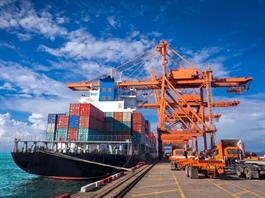Expert assesses credit-related development challenges
Expert assesses credit-related development challenges
Phan Duy Hung, senior analyst and director at research-focused risk assessment firm VIS Rating, scrutinises the role of credit in economic development, and suggests how Vietnam can sustain growth without relying too much on monetary policy.

Phan Duy Hung |
From 2020 until present, the ratio of outstanding credit balance to GDP in Vietnam has always exceeded 110 per cent and steadily increased. What is your assessment of this?
The increasing ratio of total credit over GDP nominal shows a strong relationship between credit growth and economic growth in Vietnam.
This means that domestic businesses depend mainly on funding from banks to operate. It will take a long time for domestic businesses to accumulate capital and strengthen their balance sheets.
An excessively high credit-to-GDP ratio may pose risks such as increased bad debts, the risk of high inflation and the risk of financial and real estate asset bubbles.
Examples of high credit growth that led to higher inflation were the 2007-2008 and 2009–2011 periods. The problem was that domestic businesses could not absorb a large amount of funding from loans for business expansion but used it to speculate on real estate and financial assets. That led to the financial asset bubble with high inflation.
Current credit policies are geared towards supporting high GDP growth. What are the potential risks of this approach?
The first challenge lies in the structural maturity mismatch in the banking sector. While banks are primarily funded by short-term deposits, we are seeing robust demand for longer-term corporate lending, particularly with increased public disbursement.
Liquidity issues in the banking system have been a growing concern, particularly for small banks. As loan growth increases, we expect deposit competition to intensify, and small banks that rely heavily on short-term market funds and have weak liquid asset buffers to be vulnerable to higher funding costs and liquidity challenges
Added to this, Vietnam's credit market remains highly bank-centric. Bank loans are the dominant financing channel, whereas long-term funding from corporate bond market accounts for less than 10 per cent of GDP. This is significantly lower than regional peers such as Singapore, Thailand, and Malaysia, where corporate bonds contribute over 15 per cent of GDP. A more diversified funding base with growing domestic corporate bond market would help ease some of the liquidity pressures for banks.
The rapid credit expansion into higher-risk sectors, such as real estate and construction, as well as governance risks continues to be key concerns for banks’ asset quality. Over the past three years, credit exposures to these sectors have grown at a compound annual rate of 18 per cent, significantly outpacing overall sector credit growth of 13-14 per cent.
In addition, many banks have close linkages to corporate groups, particularly in real estate. As we have learned from recent incidents, these governance issues begin when certain individuals who hold influential positions in banks and corporate groups - either as shareholders or board members - manage to direct bank resources for their own personal interests.
These close linkages create significant operational risks for banks and amplify their vulnerability to large corporate failures, entailing shifts in market sentiment and runs on their customer deposits.
How does high credit growth, as a tool for stimulating economic expansion, impact inflation? What is the risk outlook for inflation this year?
Higher credit growth is typically reflected by an increasing money supply in the economy, making credit more accessible.
As a result, consumers and businesses are more likely to borrow and spend. More money to the market can also lead to higher prices for investment assets such as real estate and stocks. This situation creates a wealth effect, where people feel richer and spend more, further increasing demand. This increased demand for goods and services can drive up prices, leading to inflation.
We view inflation to be manageable in 2025 due to the strict control of the SBV over banks and a stable commodity market. SBV Governor Nguyen Thi Hong stated at the government standing conference on February 11 that the central bank would closely monitor credit growth trends, if inflation is kept at a low level, it will adjust the credit growth target upwards, and vice versa.
The official target for 2025 from National Assembly is an average consumer price index increase of 4.5 per cent, higher than in 2023 when it stood at 3 per cent. This is a signal that the authorities accept higher inflation at an acceptable threshold and are aware of the risk from a higher credit growth target.
Additionally, the stable trend of global commodity prices (such as crude oil, fertilisers, metal, and rice) in the fourth quarter of 2024 and early 2025 will support the stable cost of manufacturing production and balance the risk of increasing credit.
At a government press conference in January, SBV Deputy Governor Dao Minh Tu revealed that average credit growth of 2 per cent contributes to a 1 per cent increase in GDP. How can Vietnam sustain economic growth without relying too heavily on monetary policy?
Increasing credit aims to support domestic businesses, helping them recover and grow post-pandemic. To limit the spillover effect of more money in the market, credit needs to be directed towards productive sectors that can stimulate economic growth.
After various policy changes in 2024, the government's priority in 2025 will focus more on public investment to stimulate the economy. We view public spending, FDI, and exports as key to maintaining Vietnam’s robust economic outlook and momentum to achieve the National Assembly’s 2025 GDP growth target.
























